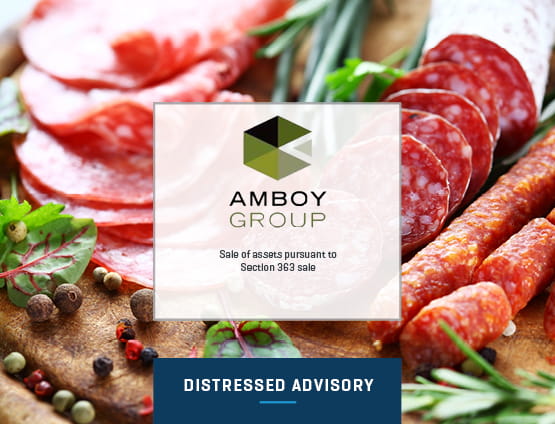Food & Beverage Is This Hot Market Showing Any Signs of Slowing Down?
Food & Beverage Is This Hot Market Showing Any Signs of Slowing Down?
Experts have a frank discussion about the current M&A landscape, weighing in on investment trends and strategies, popular consumer markets, and red flags.
Editor’s Note: This panel was conducted prior to the COVID-19 pandemic.
The past five years have produced a robust market for food and beverage transactions, where it’s not uncommon to see dozens of bidders chasing even relatively modestly sized assets. Purchase price multiples have expanded beyond those seen even during the peak that was reached just prior to the Great Recession. Will this frothy market continue? If so, how should owners and management think about preparing a company for sale? Gian Ricco, a Managing Director in Stout’s Investment Banking group and Head of Food and Beverage, was a featured panelist at a recent event hosted by OPUS Connect. Moderated by Michael Ilagan of Blackland Capital Partners, the panel also included Cathy Jaros of The Peakstone Group, Bob Dekker of Balmoral Advisors, and Nathan Aslesen of Craig-Hallum Capital Group.
Is the food and beverage market still hot for investors? What categories are garnering the most and least interest?
The panel agreed unanimously that if an organization is profitable and well-managed, it will have ample opportunity to achieve extraordinary multiples. If a company is less sophisticated or experiencing sub-optimal EBITDA (earnings before interest, taxes, depreciation, and amortization) margins within a sector, there will likely still be interest, but not at such heights. As companies are being brought to market, there is a wide range of valuations being placed on potential targets; it is not uncommon to see ranges that include one or more high bids that are twice those of the lowest bidders.
A number of categories continue to see keen interest in private-label products, where it’s easy to scale up without having to invest in the brand. Food services distribution is also hot, as are beverage, snacking and ingredient-related companies. Packaged manufacturing has also remained strong. “Anything on the perimeter of the store is likely to attract interest, while the center of the store will require you to be the number-one or -two player in your category,” said Ricco.
The panel acknowledged that retail is a more challenging sector, as companies are trying to figure out the dynamics of how to get food products into people’s hands while also contending with customer “giants” such as Amazon and Walmart.
What red flags might drive buyers away?
Anything on the inverse side of well-managed, data-driven companies will give investors pause. Management turnover, lack of strategy, and customer concentration are the usual suspects, not just in food and beverage but in most industries. Quality is also paramount – investors will want to know whether there has ever been a recall or issue that has impacted customer confidence and safety.
This industry is dominated by big companies. Is that a means of rationalizing customer concentration?
“It’s difficult to avoid customer concentration in this business. Walmart is a good example of why you should diversify – one slip-up and the impact will be felt. It’s noteworthy how large a company can get and still have customer concentration,” said Ricco.
The panel also noted recent workouts and failures they’ve seen that are attributable to customer concentration. Next to the velocity of sales, customer concentration was cited as one of the biggest challenges or potential red flags. The panel then suggested that the next wave for manufacturers will be how to manage emerging brands trying to get to critical scale. Larger, more established players continue to struggle against smaller, more nimble, and perceived more authentic emerging brands.
How are investors going to finance these businesses?
The panel alluded to seeing strategic buyers involved in more and more transactions, noting that they tend to show up well-informed, as they obviously know what they’re doing. At the same time, there is an abundance of new private equity funds in the market that can distort values as they compete for acquisition and investment opportunities. Essentially, the food and beverage market is experiencing the full range of investor interest and activity.
As they pertain to financing, some large corporate venture arms have started to pull back though the private equity community shows no signs of subsiding. Debt levels in leveraged buyouts also remain robust, with 4x-4.5x EBITDA in total debt not uncommon – possibly higher if the company has a strong track record of stable profitability.
The next question an investor must ask is: Can I trust this management team to be a steward of my investment?
The panel agreed that this is a primary consideration. Does the management have a strategy and command of the business? What data and analytics drive their decision-making? What roadblocks does the business face? What is the management style, and how does it trickle down through the company? These are all questions investors are likely to consider. Whether the acquisition is a platform deal or an add-on is also a factor. If the acquisition represents a platform (i.e., new investment in the space) then the strength of the management team will be front and center. An investor needs to know whether the current leadership in question is fully committed to sticking around for the next five years or so, and if not, who will step in to fill the void.
“Something we often do when evaluating a prospect is go on a plant tour. As we do so, I’ll watch how the employee base reacts to their boss walking the floor. What’s the interaction like? Does the employee base smile when they see you, or do they pretend their CEO/president/owner isn’t even there? Do they engage in small talk? Does the leader even know anyone’s name? You can tell a lot about the culture of a company even during a quick 15-minute plant tour,” said Ricco.
Is there an evaluation of the coachability of a client?
The panel agreed that the earlier an investment banker can start working with companies who want to be sold, the better, because it affords you the room to provide coaching and the client to make a few potential quick, but impactful, changes to the business. Selling your business is a marathon, not a sprint, that can take up tp six months from start to finish. Executives, owners, and founders to be open-minded as a sale process can take many twists and turns before arriving at a successful conclusion.
What other factors lead to aggressive, frothy bidding?
The buzz is focused on the velocity of retail right now, including revenue, scale and margin, high growth, and profitability. If you’re in an end market and category that’s growing exponentially, you’re going to attract attention. All panelists agreed that the food sector itself seems to magnify these factors more than other industries.
Do you feel that multiples have plateaued?
The panel agreed that it would be difficult to imagine a continued increase multiples from current levels; indeed, valuations appear to have stabilized over the past 24 to 36 months. Banks seem to be anticipating a recession that hasn’t shown up, which may cause a growing conservatism on debt. However, non-bank lenders have changed the competitive landscape through broadening options and increasing debt capital available which should help sustain the market even if there’s a slight pullback from the traditional banks.
On the equity side, Ricco commented, “There’s still so much dry powder available right now. The current estimate is $1.5 trillion in total purchasing power, owing to a number of funds that used to be valued in the $250 million-$500 million range but have now reached $1 billion in assets.” In addition to private equity, the proliferation of family offices investing directly in companies was identified as an additional source of money finding its way into the market.
Will innovation continue to fuel this sector, or do you feel that the U.S. is becoming less entrepreneurial?
The panel was enthusiastic about innovation, citing the proliferation of new brands and products landing on shelves in grocery stores. Consumer trends are changing faster than ever, and that is driving innovation quicker than ever. There are so many pockets to explore in food, science, and agriculture. These sectors continue to be disrupted by (sometimes, exclusively by) entrepreneurs.






